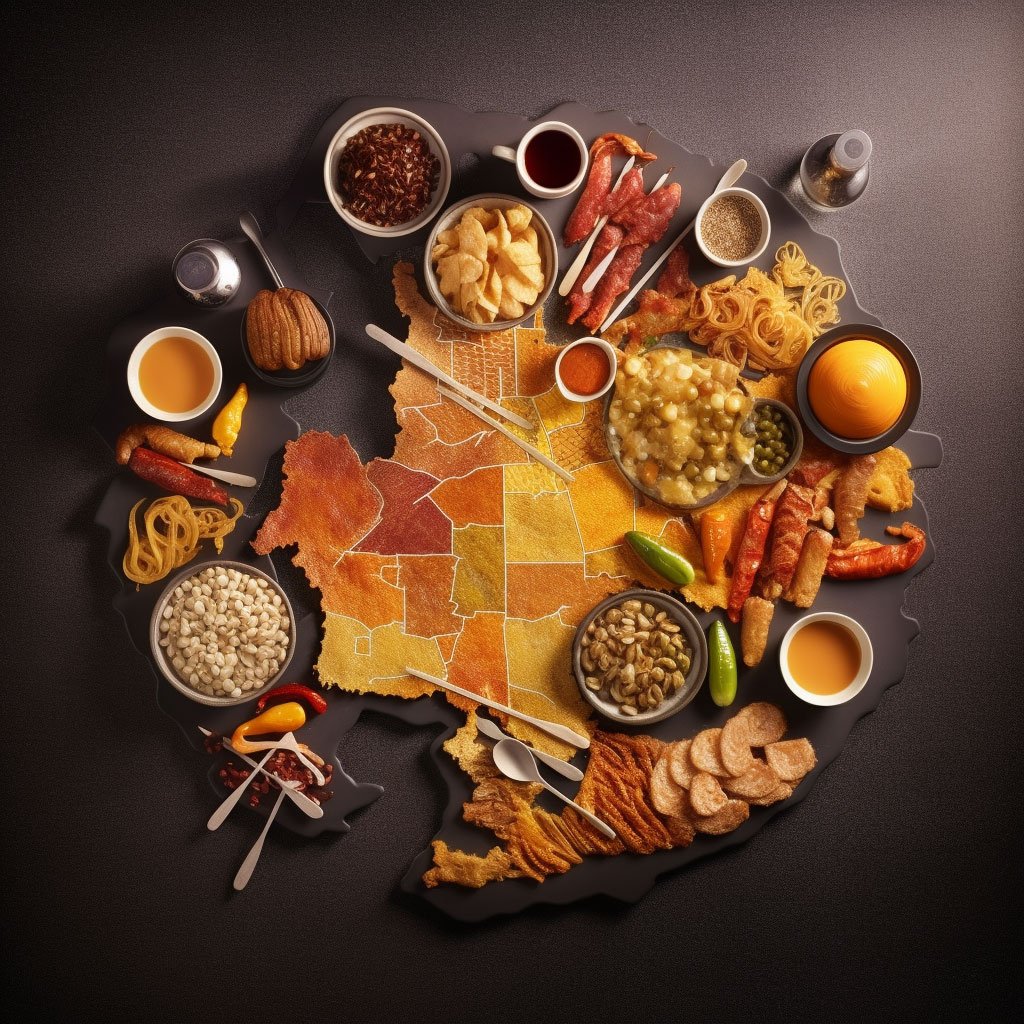
Spain’s culinary landscape is as diverse and vibrant as the country itself. Each region offers its own unique gastronomic experience, creating a fascinating mosaic of flavors, ingredients, and traditions. From the coastal regions to the mountainous interiors, the country’s cuisine reflects its varied geography and history. Whether you’re a fan of seafood, meat, or vegetarian dishes, Spain’s regional cuisines have something to offer.

Valencia: The Birthplace of Paella
Our culinary journey begins in the heart of Valencia, the birthplace of paella. This iconic dish, simmered in a wide, shallow pan, is a medley of flavors combining saffron-scented rice, rabbit, chicken, and a variety of vegetables. The key to a great paella lies in the rice, which absorbs all the flavors of the ingredients and the stock. Valencia is known for its rice fields, and the local short-grain rice is perfect for paella as it soaks up the rich flavors of the dish.

The tradition of making paella in Valencia dates back centuries and is a cherished part of local culture. The dish is typically cooked over an open fire, often as part of a communal meal during festivals or family gatherings. The result is a delicious, hearty dish that is as much a social experience as it is a meal.
Basque Country: Pintxos Paradise
Next, we head to the Basque Country, where pintxos reign supreme. These bite-sized delicacies, often skewered onto a piece of bread, range from traditional options like tortilla española to more modern creations. The Basque Country is renowned for its innovative culinary scene, and pintxos are a perfect example of this creativity.

Pintxos (pronounced “pinchos”) are a staple of Basque cuisine and are typically enjoyed with a glass of local wine or cider. They are served in bars and taverns throughout the region, with each establishment offering its own unique selection. Some pintxos are simple, featuring just a few ingredients, while others are miniature culinary masterpieces.
Andalucía: A Taste of the South
As we continue our culinary journey, we arrive in Andalucía, a region known for its vibrant flavors and rich culinary heritage. Here, the cuisine is influenced by a mix of cultures, including Roman, Moorish, and Jewish traditions.

One of the region’s most famous dishes is gazpacho, a cold tomato-based soup that is perfect for the hot Andalusian summers. Another iconic dish is jamón ibérico, a type of cured ham produced in Spain. The pigs are fed a diet of acorns, which gives the ham its unique flavor.
Andalucía is also known for its seafood, thanks to its extensive coastline. Fresh fish and shellfish are a staple in the Andalusian diet, often served simply grilled with a squeeze of fresh lemon.
La Rioja: Wine and More
Our next stop is La Rioja, a region synonymous with wine. Known for its high-quality reds, La Rioja is a paradise for wine lovers. The region’s vineyards stretch as far as the eye can see, and many wineries offer tours and tastings.

But La Rioja’s culinary offerings extend beyond wine. The region is also known for its fresh produce, particularly its peppers, potatoes, and beans. These ingredients form the basis of many traditional dishes, such as patatas a la riojana (a hearty potato and chorizo stew) and menestra de verduras (a mixed vegetable dish).
Catalonia: A Culinary Powerhouse
We end our culinary tour in Catalonia, a region known for its innovative and diverse cuisine. Catalan food is characterized by its quality ingredients, from fresh seafood to ripe fruits and vegetables.

One of the most famous dishes from this region is pa amb tomàquet, or bread with tomato. This simple dish, often served as an appetizer or snack, perfectly encapsulates the Catalan approach to food: take good-quality, simple ingredients and let them shine.
Basque Country: A Gastronomic Gem
As we wrap up our culinary journey, we cannot miss the Basque Country, renowned worldwide for its outstanding gastronomy. This region is home to a high concentration of Michelin-starred restaurants, testament to its culinary prowess.

Pintxos, the Basque version of tapas, are a must-try. These small bites, often skewered on a piece of bread, come in an array of flavors, from traditional options like Spanish omelette to innovative combinations like foie gras with apple compote.
The Basque Country is also known for its seafood, particularly cod, which is used in traditional dishes like bacalao a la vizcaína (cod in a red pepper sauce) and bacalao al pil-pil (cod in a sauce made from its own gelatin).
Conclusion: A Feast for the Senses
Our culinary adventure through Spain has taken us from the lush green landscapes of Galicia to the sun-drenched coasts of Andalucía, from the vineyards of La Rioja to the bustling food markets of Catalonia. Each region has its own unique flavors and culinary traditions, reflecting the diversity and richness of Spanish cuisine.

Whether you’re a fan of seafood, a wine enthusiast, or a lover of hearty stews, Spain’s regional cuisines have something to offer. So why not embark on your own culinary adventure and savor the flavors of Spain’s regions? Buen provecho!
